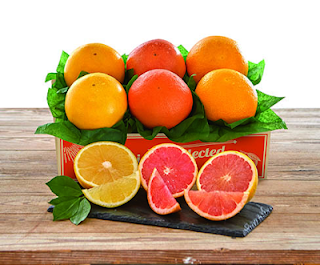A Small Carbon Footprint
Agriculture is one of the most impactful ways in which humans can affect the environment. Add to this fact that by 2050, there will be a dramatic increase in the need to feed people. Fortunately, of all of the foods produced globally, citrus has the very lowest carbon dioxide emission per kilogram, with an emission value of only 0.39. Compare that to beef, which comes in at a whopping 99.48! So, we can be reassured that citrus growing is a sustainable industry, and one that has not added to nor contributed fuel to the encroaching fire of climate change. Furthermore, the citrus industry is currently being used as a model for sustainably feeding people well into the future, when the demand for nourishing food is expected only to increase.
Climate Effects on Citrus Growing
While it is good to know that citrus growing is not adversely affecting the environment, climate change-induced weather events have the increasing potential to adversely affect the citrus groves. As such, we must diligently work to counter these effects by modifying our approaches. The Florida Citrus Belt, as it is known, is located right in the crosshairs of both hurricane tracks (see diagram above) and the southern reaches of cold fronts. As both of these events increase in intensity with climate change, the effects are noteworthy: crops can be lost to too many nights of exposure to freezing temperatures, citrus greening and infestations by psyllid insects due to excessive heat and moisture can destroy whole groves, and saltwater intrusion can kill trees at their roots.
Working in Partnership
California and Florida have long influenced each other when it comes to growing citrus, as both states have climates that make them the top producers of most of the varieties that we eat. Texas comes in as a close second. While in past years that influence has mostly been in the form of sharing research and management techniques, with the onset of climate change, growers in all three states are now cross-pollinating (pun intended) to share their harvests nationally. In the interest of keeping the carbon footprint low and the citrus quality, accessibility, and variety high, we have now expanded our groves to include California and Texas--the "national citrus belt," so to speak. This way, we can all access some really delicious fruit such as Golden Honeybells, classic Honeybells and late season Navels and Tangerines through January, even after the Florida season when the western fruits hit their flavor peaks.
So rest assured: you can enjoy and gift all of the varieties of citrus we offer at different times of the year and know that you are also nourishing both your health as well as the health of the planet.
Sources:
World of Statistics on X: "The environmental impact of foods
Florida is already seeing climate change. New global report says it could worsen | WUSF
California Citrus Industry Follows in Florida's Research Footsteps - Citrus Industry Magazine












